Explain the following observation :
a. When pent −1 en −4− yneistrested with HBr in molar proportion, the addition takes place on the double bond and not on the triple bond, thereby, yielding the porduct ,
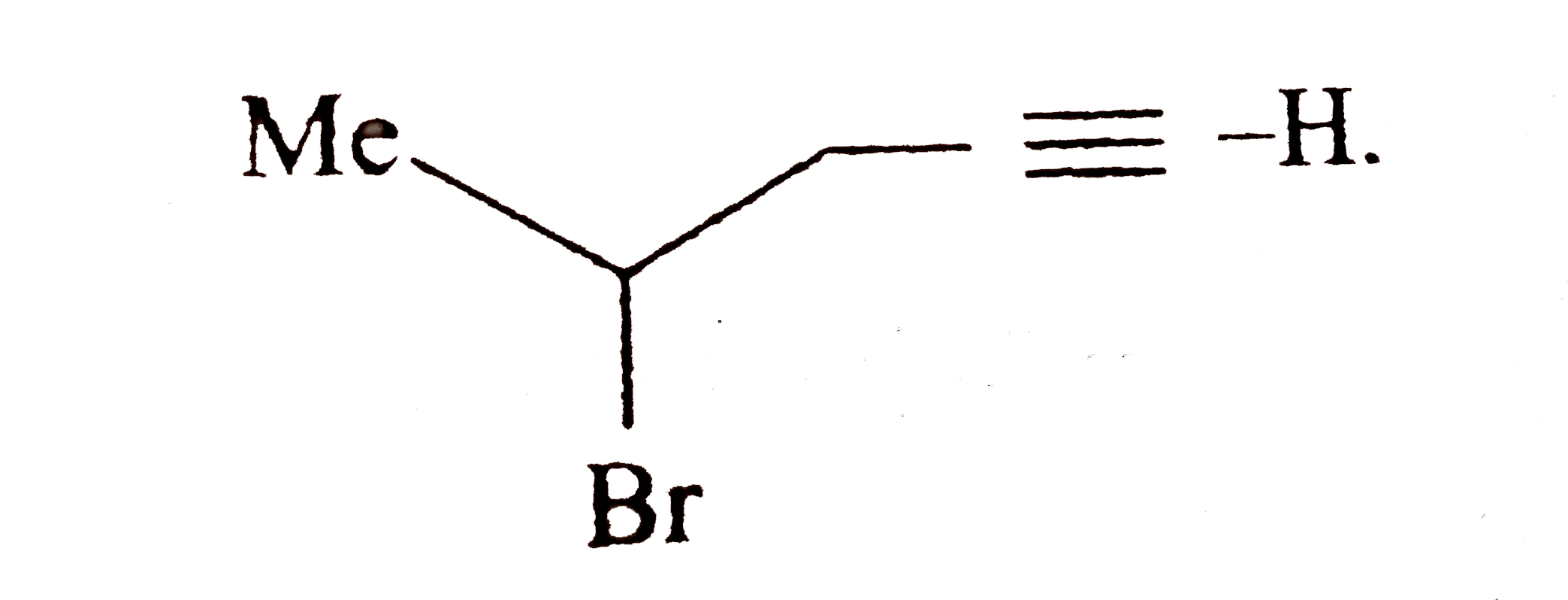
b. The (C=−C) bond length in propene is shorter than expected.
c. Whey benzyl carbocation is more stable than ethyl carbocation ?
d. Why does but −2− ene exhibit cis − trans isomerism but but −2− yne does not ?
e. CI2C=CCI2 does not add CI2 under usual conditions but adds in the presence of AICI3.
Video Solution
Text Solution
a. Electrophilic addition (EA) such as HBr on (C=C) is more reactive than on (C≡C)( except hydrogenation ),EA of HBr on (C=C) leads to the formation of 2∘C⊕ while that on (C≡C) leads to the formation of vinylic C⊕(CH2=CH⊕) as an intermediate. Vinyl C⊕ being most unstable, whereas 2∘C⊕ being relative more stable, EA takes place on (C=C) rather than on (C=C).
EA on (C=C):
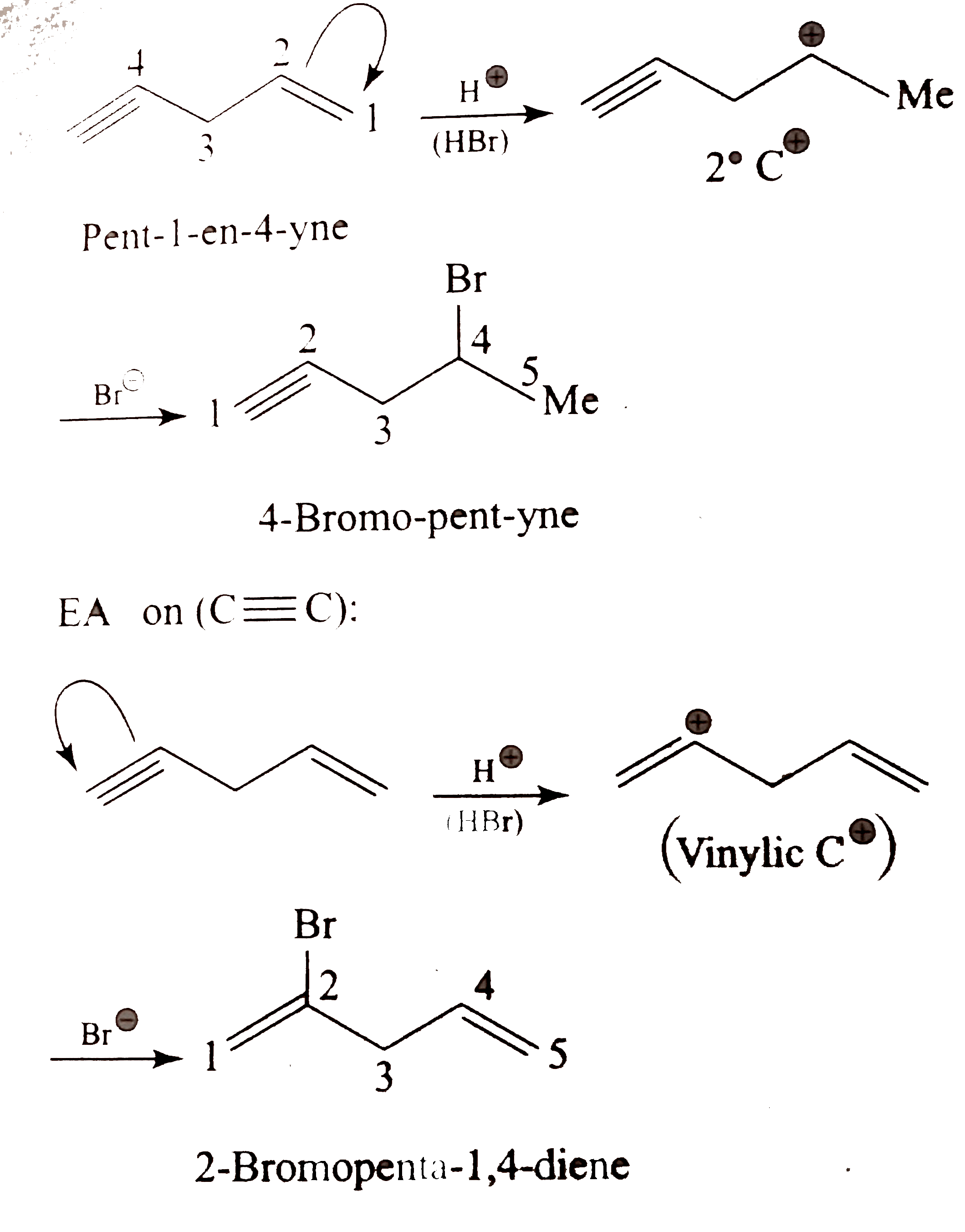
b. 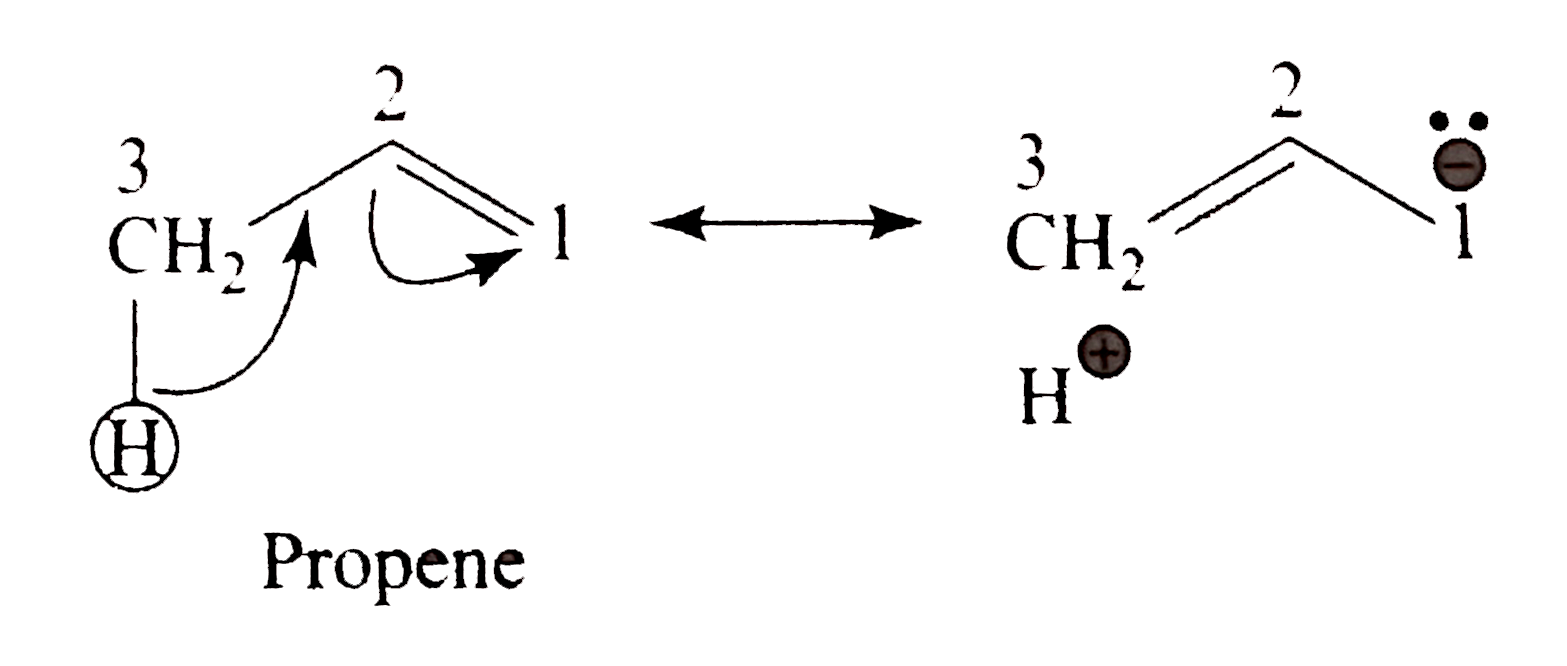 Because of hyperconjugation, the (C3−C2)
Because of hyperconjugation, the (C3−C2)
c. Benzyl carbocation is stabilised by resonance ( five resonance contributing structures ) and, thus, has lower energy and is more stable.

In comparison, C2H⊕5 shows four hyperconjugative structures ( more the resonance contributing structures, more is the stability, moreover, the resonance effect is stronger than the hperconjugation effect ). Hence, benzyl conbocation is more stable than ethyl carbocation.

d. 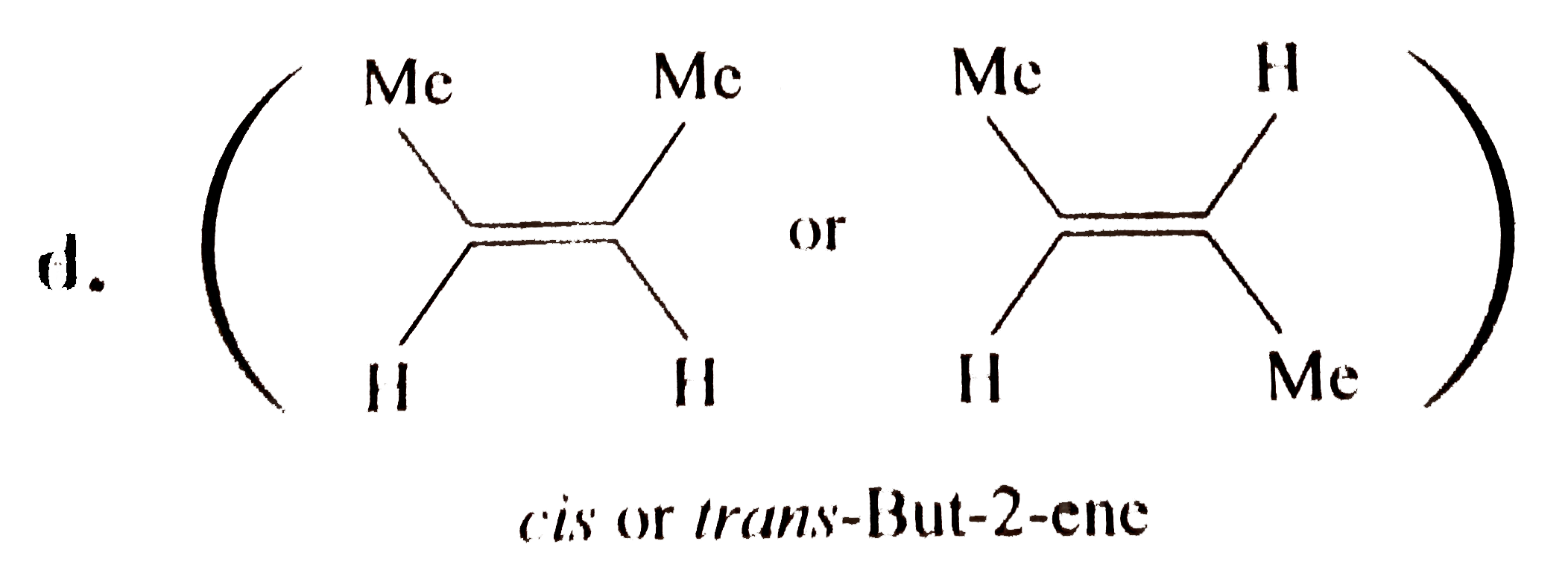
cisor trans − But −2−ene has two dissimilar groups attached to an unsaturated C atom and shows geometrical isomers, whereas but −2−yne(Me−≡Me) is sp− hybridised and is linear, and so it dows not show geometrical isomers.
e. 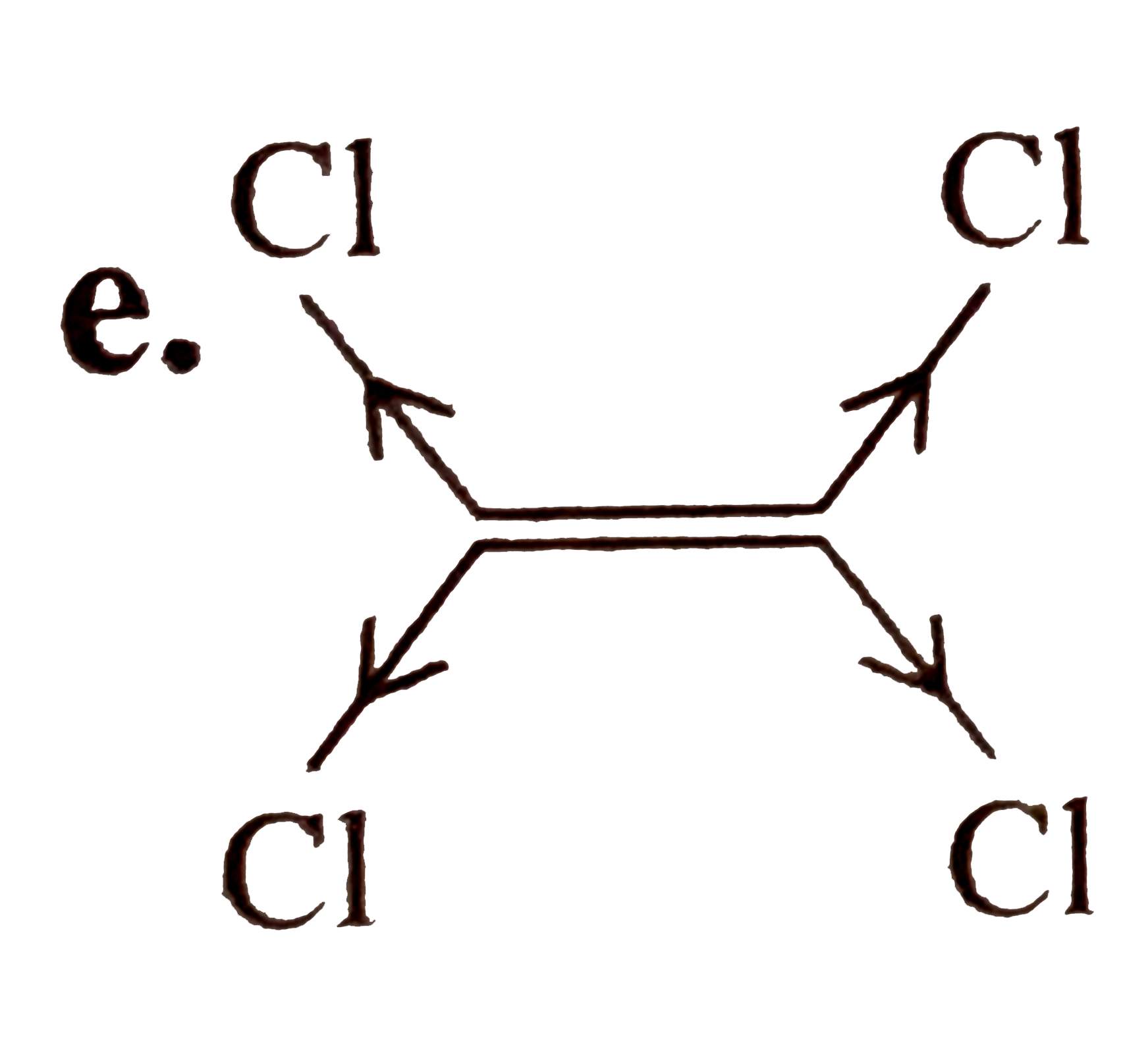 Due to the electron − withdrawing group (E.W.G.) of four CI atoms, the ¯e density or nucleophilicity of π¯e of the alkene decreases, sso EA reaction does not take place ( even does not show the test for unsaturatio, i.e., Beyer's test and decolouration of Br2 solution ).
Due to the electron − withdrawing group (E.W.G.) of four CI atoms, the ¯e density or nucleophilicity of π¯e of the alkene decreases, sso EA reaction does not take place ( even does not show the test for unsaturatio, i.e., Beyer's test and decolouration of Br2 solution ).
AICI3 reacts with Cl2 and polarises Cl2 to Cl⊕ or increases the electrophilic character of Cl⊕ that can react efficiently.

|
Topper's Solved these Questions
- ALKENES AND ALKADIENESBOOK - CENGAGE CHEMISTRYCHAPTER - ALKENES AND ALKADIENESEXERCISE - linked Comprehension Type
38 Videos
- ALKENES AND ALKADIENESBOOK - CENGAGE CHEMISTRYCHAPTER - ALKENES AND ALKADIENESEXERCISE - Multiple Correct Answer Type
41 Videos
- ALKENES AND ALKADIENESBOOK - CENGAGE CHEMISTRYCHAPTER - ALKENES AND ALKADIENESEXERCISE - SOLVED Example
62 Videos
- ALKANES AND CYCLOALKANESBOOK - CENGAGE CHEMISTRYCHAPTER - ALKANES AND CYCLOALKANESEXERCISE - Archives
13 Videos
- ALKYNESBOOK - CENGAGE CHEMISTRYCHAPTER - ALKYNESEXERCISE - Exercises (Archives - Analytical and Desriptive Type)
4 Videos
Similar Questions
Knowledge Check
Assertion(A):p-methyl benzyl carbocation (I) is more stable than benzyl carbocation (II).
Reason(R) Heterovalent or no bond resonance.AIf both (A) and ( R) are true and ( R) is the correct explanation of (A).BIf both (A) and ( R) are true but ( R) is not correct explanation of (A).CIf (A) is true but ( R) is false.DIf (A) is false but ( R) if true.A tertiary butyl carbocation is more stable than a secondary butyl carbocation because of which of the following ?
A+R effect of −CH3 groupsB−R effect of −CH3 groupsCHyperconjugationD−1 effect of −CH3 groups
How does a double bond differ from a triple bond ?
View SolutionIs it a double bond or triple bond? Why?
View SolutionOut of benzyl and ethyl carbocation which is more stable?
View SolutionGive reasons:
(i). C−Cl bond length in chlorobenzene is shorter than C−Cl bond length in CH3−Cl
(ii). The dipole moment of chlorobenzene is less than of cyclohexyl chloride.
(c). SN1 reactions are are accompanied by racemisation is optically active alkyl halides.
View SolutionA tertiary butyl carbocation is more stable than a secondary butyl carbocation because of which of the following ?
View SolutionExplain the fact that the C-O bond length in RCOOH is shorter than in ROH
View Solution

